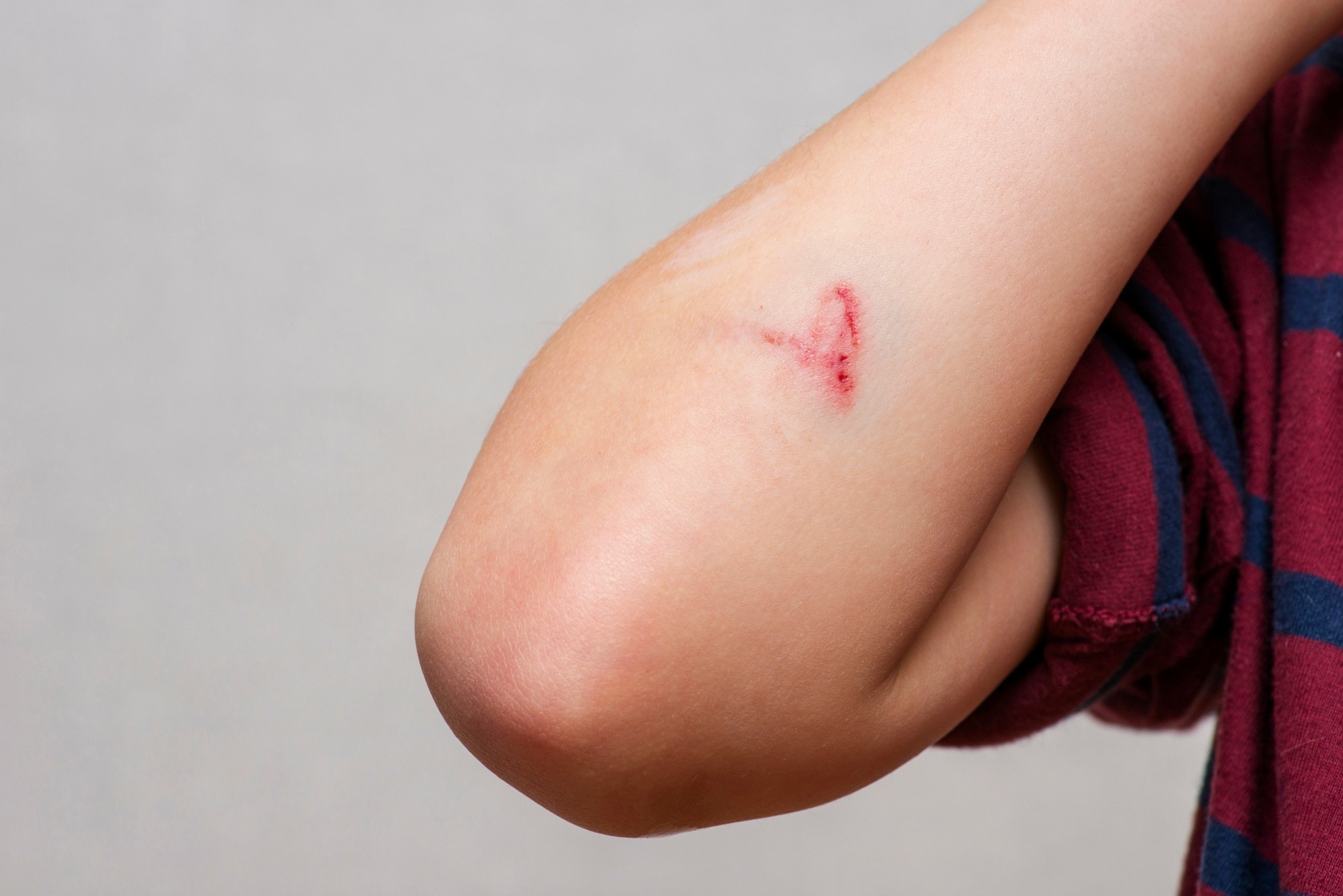In a recent article published in the journal Scientific Reports, researchers investigated the potential of thermally reduced graphene oxide/zinc oxide (TRGO/ZnO) nanocomposites as effective antibacterial agents.

Image Credit: Andrii Spy_k/Shutterstock.com
The unique properties of nanomaterials, including their high surface area and reactivity, make them promising candidates for enhancing antibacterial activity. This research aims to synthesize these nanocomposites and evaluate their efficacy against common bacterial strains associated with wound infections.
Background
Wound infections present significant challenges in clinical settings, often resulting in prolonged healing times and increased healthcare costs. The growing prevalence of multidrug-resistant bacterial strains has reduced the effectiveness of traditional antibiotics, creating an urgent need for innovative solutions.
Nanotechnology has emerged as a promising approach in medicine, particularly for developing materials that more effectively target bacterial cells. Among these, GO and ZnO have attracted considerable attention due to their unique antibacterial properties.
GO offers excellent mechanical strength and electrical conductivity, while ZnO is renowned for its photocatalytic activity and its ability to generate reactive oxygen species (ROS) that can damage bacterial cells. Combining these materials into a nanocomposite is expected to enhance their individual properties, resulting in superior antibacterial performance.
The Study
In this study, nanocomposites were synthesized using a hydrothermal method. First, GO was prepared by oxidizing graphite powder through a modified Hummers' method, which involved treating the graphite with concentrated sulfuric acid, potassium permanganate, and hydrogen peroxide. The resulting GO was then thermally reduced by heating it at 200 °C for 2 hours to produce thermally reduced graphene oxide (TRGO).
For the synthesis of ZnO nanoparticles, a sol-gel method was utilized. Zinc acetate dihydrate was dissolved in methanol to create a precursor solution, which was heated to 60 °C under constant stirring. After 30 minutes, sodium hydroxide was added dropwise to the precursor, forming ZnO nanoparticles. The mixture was maintained at 80 °C for an additional hour, followed by centrifugation and ethanol washing to remove unreacted materials. The ZnO nanoparticles were then dried at 100 °C for 12 hours.
The synthesized materials were then characterized using various techniques: X-ray diffraction (XRD) to evaluate crystallinity, field emission scanning electron microscopy (FE-SEM) for morphological analysis, and high-resolution transmission electron microscopy (HR-TEM) to determine particle size and distribution. The antibacterial activity of the nanocomposites was tested using the disk diffusion method against bacterial strains, including Escherichia coli, Staphylococcus aureus, and Pseudomonas aeruginosa.
Results and Discussion
Characterization results confirmed the successful synthesis of TRGO/ZnO nanocomposites, showing a uniform distribution of ZnO nanoparticles on the TRGO surface. XRD patterns revealed the crystalline nature of ZnO, while FE-SEM and HR-TEM images demonstrated the nanoparticle morphology and size.
Antibacterial assays showed that the TRGO/ZnO nanocomposites exhibited significant antibacterial activity against all tested bacterial strains. The minimum inhibitory concentration (MIC) values indicated that the nanocomposites were effective at lower concentrations compared to their individual components, suggesting a synergistic effect between TRGO and ZnO.
The study also explored the nanocomposites' mechanism of action. It was found that the presence of TRGO/ZnO significantly increased ROS production, which induced oxidative stress in bacterial cells, ultimately causing cell damage and death. Microscopic examinations revealed key morphological changes in bacterial cells exposed to the nanocomposites, such as membrane disruption and structural degradation. These findings highlight the potential of TRGO/ZnO nanocomposites as a promising solution for combating bacterial infections, particularly in wound healing applications.
The study emphasized the importance of optimizing synthesis parameters to maximize the antibacterial properties of the nanocomposites. Key variables such as the ratio of TRGO to ZnO, synthesis temperature, and hydrothermal process duration were identified as crucial factors influencing the final material properties.
Furthermore, the antibacterial efficacy of TRGO/ZnO was compared to other nanomaterials, with TRGO/ZnO outperforming them in some cases. The potential for integrating these nanocomposites into wound dressings or topical formulations was also highlighted, as they offer the dual benefits of promoting healing while preventing infection.
Conclusion
In conclusion, this research successfully synthesized TRGO/ZnO nanocomposites and demonstrated their significant antibacterial activity against common wound-infecting bacteria.
The study provides strong evidence for the potential application of these nanocomposites in wound healing, especially in light of rising antibiotic resistance. The findings suggest that TRGO/ZnO nanocomposites could offer a promising alternative to traditional antibiotics, providing a multifaceted approach to infection control.
Future research should focus on in vivo studies to further assess the safety and efficacy of these nanocomposites in clinical settings. The integration of TRGO/ZnO into wound care products could revolutionize infection management, improving patient outcomes and reducing healthcare burdens associated with wound-related complications.
Journal Reference
Hassen A., Moawed E.A. et al. (2024). Synergistic effects of thermally reduced graphene oxide/zinc oxide composite material on microbial infection for wound healing applications. Scientific Reports 14, 22942. DOI: 10.1038/s41598-024-73007-5, https://www.nature.com/articles/s41598-024-73007-5